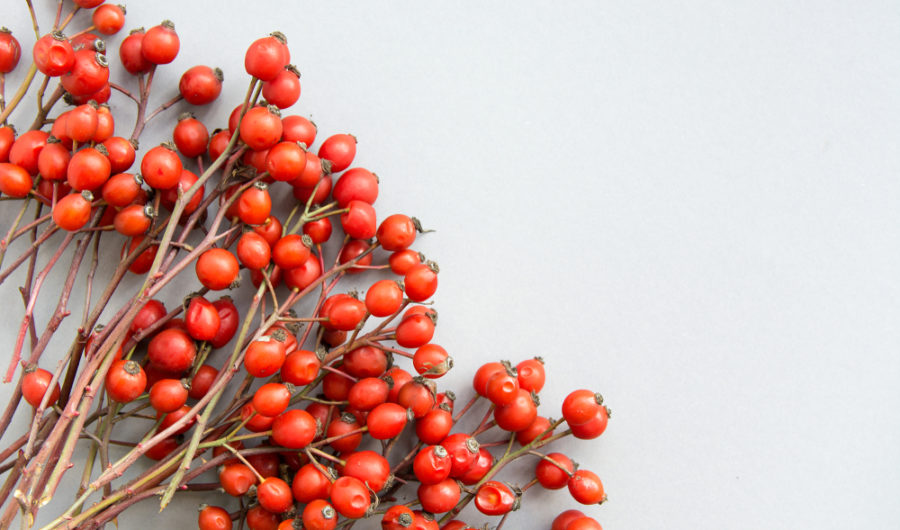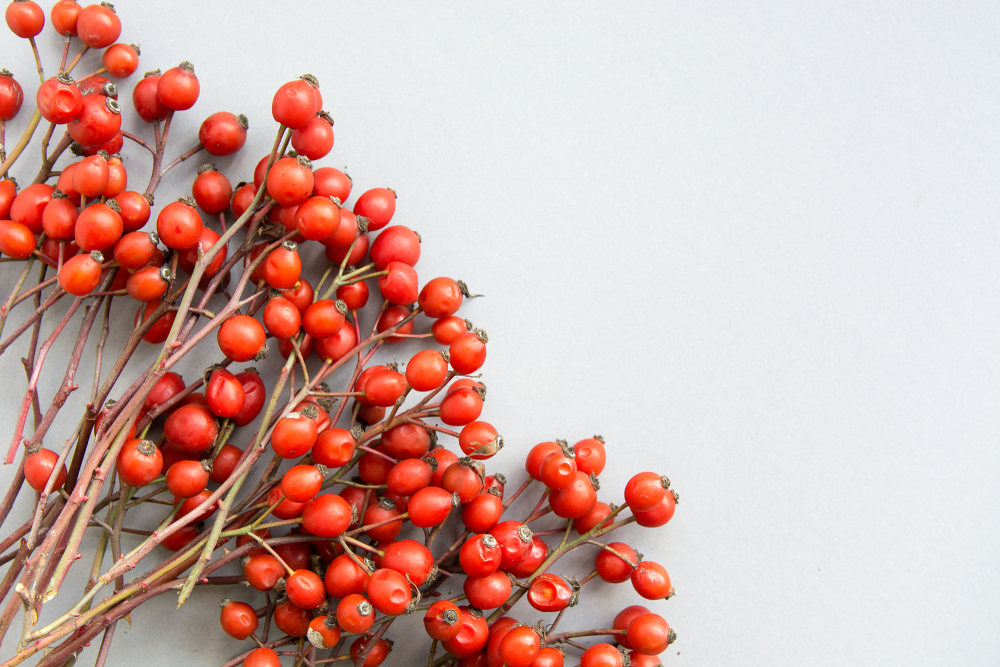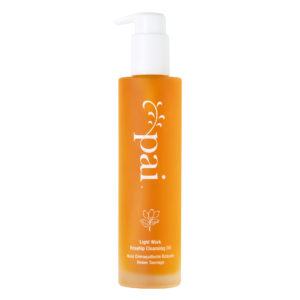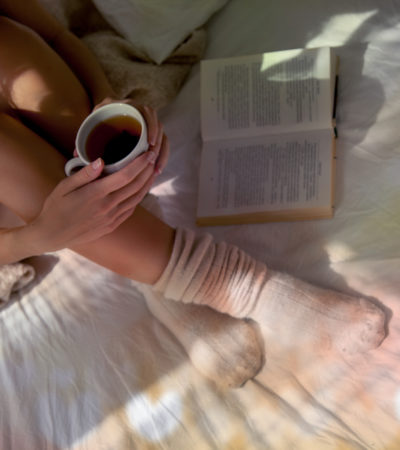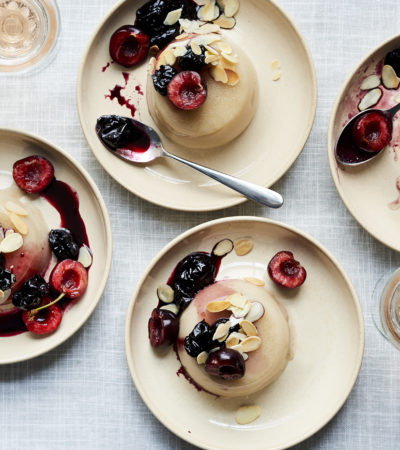Content Editor, Molly Jennings, reveals how Rosehip Oil came to the rescue as a last attempt to help her rosacea.
Looking back at my skin journey, I didn’t experience what is classified as “typical teenage skin” when I was younger. I was, in fact, incredibly lucky to be blessed with a pretty much blemish-free complexion throughout my teenage years. I do remember feeling very grateful at the time as I witnessed first hand so many of my friends struggling with the onset of acne, causing a real lack of confidence. Your teens are a tense time regardless of what your skin’s doing. The hormones and body changes alone are enough to tackle as it is!
I didn’t wear much makeup on my face, although I did love a good layer or two of mascara and eyeliner! Who didn’t? I never had much of a skincare routine either. At 16, you really don’t need an extensive skincare regime anyway! I took makeup off with a wet wipe and that was pretty much it.
The moment my skin changed was when I decided I wanted a more of “grown-up” skincare routine. Oh, boy, do I regret that looking back. For Christmas one year, I asked for some skincare products from quite an established beauty brand (who shall remain nameless as I do believe their skincare is good, it just wasn’t right for a 16/17-year-old complexion) and that was the real turning point when things started to go wrong. A week or so into my new fancy skincare routine (which I did not need) my skin started to show signs of sensitivity. Red bumps and spots started to appear and I do think that was what triggered my rosacea.
Rosacea is still a fairly misunderstood skin condition and there are many theories as to why some people get it. It is, however, widely believed to be hereditary, which would make sense as my mum has suffered with it over the years. Many people say it can be a condition that lies dormant until something triggers it, like a skin reaction, and I do think this was the case for me. I overloaded my delicate teenage skin with day creams, day serums, night creams and night serums, which, looking back, was totally unnecessary and way too rich.
From that moment on and into my early twenties saw the development of more and more sensitivity and redness. I have to say it really knocked my confidence and I became increasingly self-conscious and upset by it. I felt so annoyed that after years of great skin, I was now really struggling. I tried everything to get rid of it, going from one sensitive skincare range to the next hoping I would find something within my control to fix it. After years of no success and suspicion I had developed mild rosacea, I bit the bullet and got the diagnosis confirmed by a top London derm, who herself, had rosacea-prone skin. Finally, someone who understood! Topical creams were prescribed and they did actually work but I wanted to find a more natural, long-term solution rather than be on prescription creams for the rest of my life. After I finished my last tube I gave myself a cooling-off period to see if my skin would go back to the way it was. Over the weeks my rosacea did start to creep back but because I had the confidence the prescription creams worked, I felt comfortable experimenting to see if something more natural could work just as well.
This is where my journey with Rosehip Oil began! I had been told time and time again over the years from different sources that Pai’s Rosehip Oil was liquid gold and so so amazing for sensitive, rosacea-prone skin. I didn’t listen and, on the opinion from my derm that oils were not good for sensitive skin, I steered clear of them like the plague. The funny thing about this whole journey is that Pai sent me their Rosehip Oil but I had kept it under my desk, unopened for the best part of a year. One day I had a “fuck it” moment and I took it home with me and gave it a go. It didn’t take me too long to realise that this was a cult product for a reason. I got zero reactions and each morning my skin looked better and calmer than the day before. My under the skin bumps and red flushed cheeks (trademark rosacea symptoms) slowly started to get less and less noticeable. I don’t believe there are any quick fixes in life and I’m not going to make this out to be an overnight success because it wasn’t. But after real long term use, I can safely say my skin has been totally transformed. The stubborn, under the skin bumps have vanished and the trademark rosacea flush hardly ever rears it’s head (unless I’ve done a workout but that’s to be expected!). There is some scarring from previous spots but they are hardly noticeable and I think the rosehip has also helped to heal them too and will continue to do so.
I am completely over the moon and blown away by Pai’s Rosehip oil and I use it religiously (my husband is now just as addicted!). I also use their new Rosehip Oil Cleanser (never thought I’d use an oil cleanser!) and it’s safe to say I love it just as much as the oil and it’s an absolutely winning combo for my face. If you’ve got sensitive skin, there really is no better brand to turn to in my eyes. Pai’s founder, Sarah Brown’s story is really inspiring and the whole reason why Pai exists today is because of her struggles with her own skin. I’m totally in awe of her and couldn’t be more grateful for the creation of her Rosehip Oil.
I managed to sit down with her to talk a little bit more about why Rosehip Oil is so amazing, in the hope that it might give you the nudge you need to go a try it for yourself…
Where does Rosehip Oil come from?
Rosehip Oil comes from the red fruit of the rose. Not all rosehip oils are created equal though! The quality depends on how it is grown and, more crucially, how it’s extracted. We extract oil from the whole hip (not just the seeds inside) and use CO2 extraction – which is a much cooler and more eco-friendly method than conventional cold pressing. This technique delivers an oil with twice the regenerative sterols and five times more carotenoids than an average cold-pressed rosehip seed oil.
You can instantly tell the quality of rosehip oil by its depth of colour and aroma. The deeper the orange – the higher the quality, the fresher the oil and the more concentrated its properties. Rosehip oil should never smell like cooking oil as that signifies rancidity – it should have a more peppery, herbaceous aroma.
Pai’s Rosehip Oil is an absolute hero product for the brand. What was it about this miracle-like oil that made you want to include it in your line of skincare?
It’s a great story! initially, we were using it in our Chamomile & Rosehip Calming Day Cream (still do, in fact), which was getting amazing reviews. We then had a very specific case of a customer who was using it on some severe scarring post a road accident. After using it for several weeks religiously, she was told she no longer needed skin grafts. Doctors told her it was a miracle. She called me up and told me to patent the formula!
We knew Rosehip Oil had these incredible regenerative and healing properties. So decided to bottle it but take it to the next level – by using all the flesh of the hip not just the seeds. It’s tricky to work with but so worth the extra effort.
A lot of people seem confused about facial oils, particularly if you have troublesome or sensitive skin. Some love them, some hate them! What is it about Rosehip Oil that makes it so great for sensitive skin and even rosacea-prone skin like mine?
It can feel counterintuitive to put facial oils on sensitive and particularly acne-prone skin. Rosehip Oil is altogether different though to more conventional vegetable oils (e.g. jojoba or sweet almond) or mineral oils commonly used in facial oil blends. Our Rosehip Bioregenerate oil has a different texture and absorbs very quickly and easily. Less is more with this oil – you only need 2-3 drops per application. Because it is rich in fatty acids, it helps to strengthen the skin which can help reduce rosacea flare-ups.
You’ve recently launched your Rosehip Cleanser, what would you say is the best method for cleansing sensitive skin? Is the less is more approach better?
Cleansing is the most important step to master for those of us with sensitive skin. It’s all about restoring balance. When you have balanced pH and oil production the rest falls into place. Imbalances are partly caused by cleansing with the wrong products – such as anything that foams or has high alcohol content. Detergents in facial cleansers spike the pH and strip the oil – so the skin either overproduces oil to compensate (in the case of oily/combination skin) or struggles to replace the lost oil (in the case of dry/mature skin).
I only double cleanse if I’ve been wearing makeup and I only cleanse once daily in the evening. Controversial I know(!) but for sensitive skin, less is more. A rinse with water in the morning is sufficient for me.
We have two cleansers in the Pai range. The new Light Work Rosehip Cleansing Oil is a hard-working makeup remover specifically for sensitive skin and eyes. Lots of makeup removal routines involve a lot of wiping, rubbing and tugging. All of which increase the likelihood of redness and irritation, not to mention compromising the elasticity of the skin. The Cleansing Oil has the perfect slip for smooth spreadability and turns into a milk with water and just washes off effortlessly. Our second cleanser is a cream formula – our Camellia & Rose Gentle Hydrating cleanser. It’s super gentle, can also be used around the eyes with no irritation and comes with a dual-sided cloth – soft terry on one side, muslin on the other. It’s a fantastic second cleanse post the oil if you want to double cleanse. It leaves skin really soft, plumped and nourished, rather than dry or tight. If I’ve not been wearing makeup, I will use only this one in the evening.
Discover more about Pai here – www.paiskincare.com

